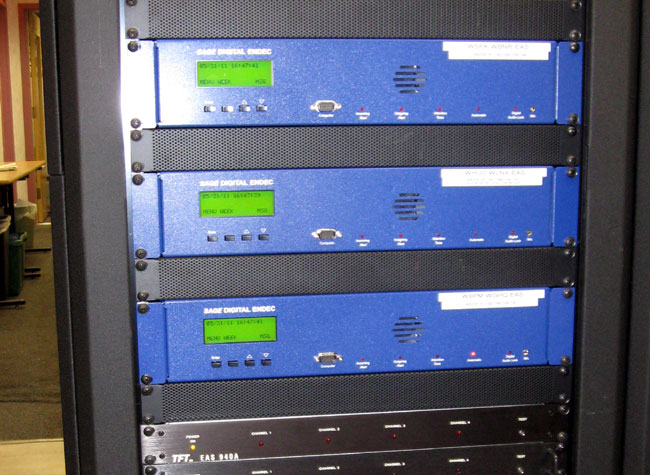Lots of ink has been spilled about the new CAP (Common Alert Protocol) implementation and what it all means. Since the FCC started the six-month CAP clock ticking on September 30th of last year, they have extended the deadline by six months to September 30, 2011.
The idea of upgrading EAS is a good one. When EAS replaced EBS in 1997 it was supposed to do away with the over-the-air relay system also known as the daisy chain. This was left over from the 1960s CONELRAD system implemented by Kennedy. That replacement never occurred and stations today are still monitoring other broadcasting stations for their EAS alerts. The daisy chain was and still is the source of all EBS and EAS failures.
CAP is supposed to eliminate that weak link by allowing the EAS unit to access government IPAWS message servers directly, allowing FEMA to automatically send out alert messages to designated areas. This has some libertarians in an uproar, as they see government intrusion and taking over privately owned radio stations to broadcast emergency information as a form of tyranny. In as much as the definition of “emergency message” has not been codified by FEMA in any of their information, they may have a point. In the past, the general definition of emergency communications was those that were pertaining to imminent threats to the safety of life and property. According to Executive Order 13407, Public Alert and Warning System, the purpose is to:
…have an effective, reliable, integrated, flexible, and comprehensive system to alert and warn the American people in situations of war, terrorist attack, natural disaster, or other hazards to public safety and well-being…
Which is certainly much broader in scope. How does one define a hazard to “well-being?”
SAGE alerting systems have completely revamped their ENDEC to include CAP 1.2. It uses the internet to connect to IPAWS servers and receive CAP messages. As the SAGE ENDEC owners manual notes, participation in local and state-level alerts is at the discretion of the station management, as regulated by the current version of FCC Part 11. National-level participation is mandatory:
Participation at the national level is mandatory for most broadcasters. You may petition the FCC to become a “Non Participating National” station, but you must still receive and broadcast the EAN code, and then leave the air. These requirements are always evolving, refer to the FCC rules, in particular CFR 47 Part 11 for details.
Oftentimes, it is the local emergencies that are the greatest and most immediate threats to human life; the tornado, the tsunami, etc. Those are the most pressing threats, not the national-level alerts, which were implemented in the 1960s to warn of a major attack from a foreign country, something not very likely these days.

Further, the internet has proved to be less than reliable when trouble occurs. During the terrorist attacks on 9/11/2001, dial tone, cellphone, and internet service for much of lower Manhattan were disrupted because the TELCO facilities were in the buildings that were destroyed. Most internet services rely on wired or fiber optic services provided by TELCO or cable companies, which can be affected by power outages, damaged infrastructure, and so on, which would likely occur in a major emergency.
It does not seem to be the most robust method for the distribution of emergency messages.
